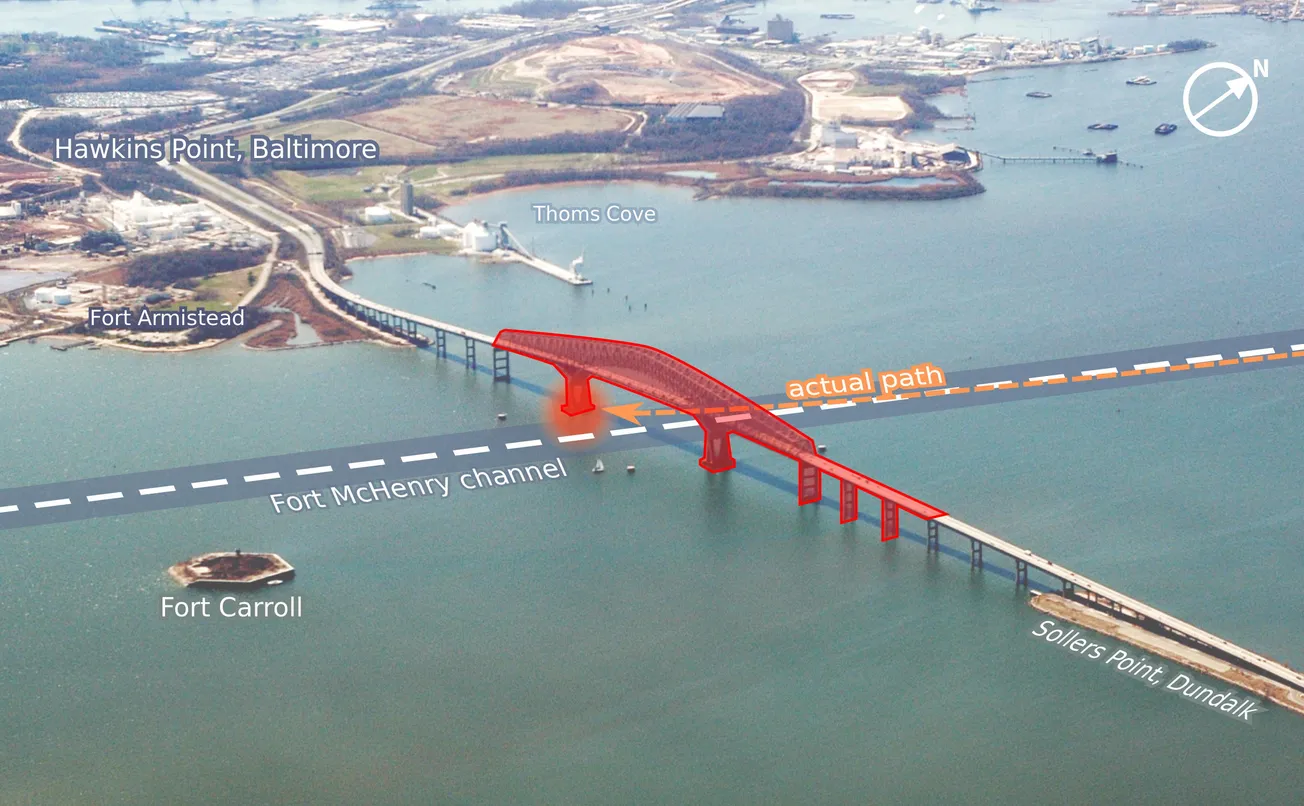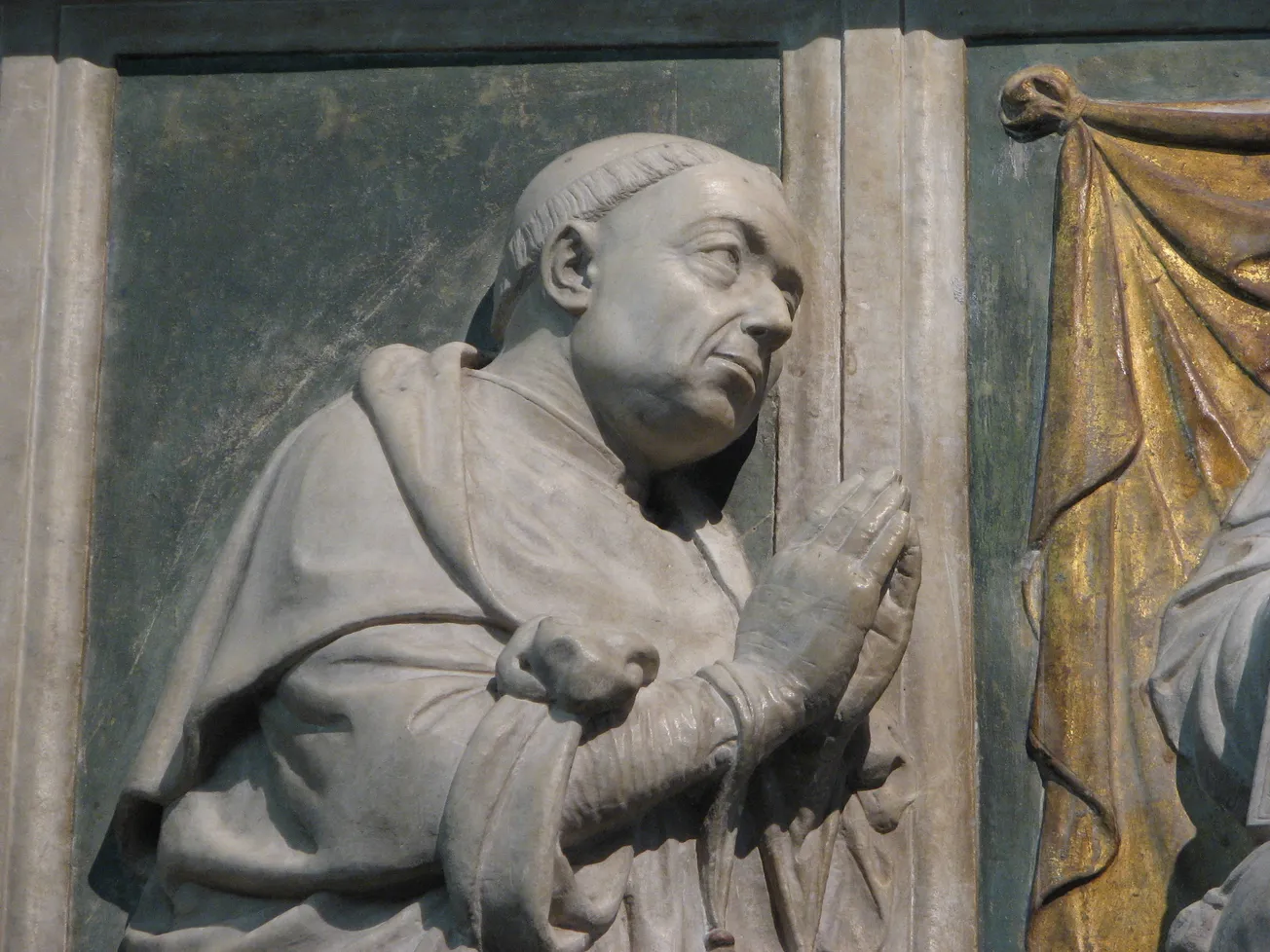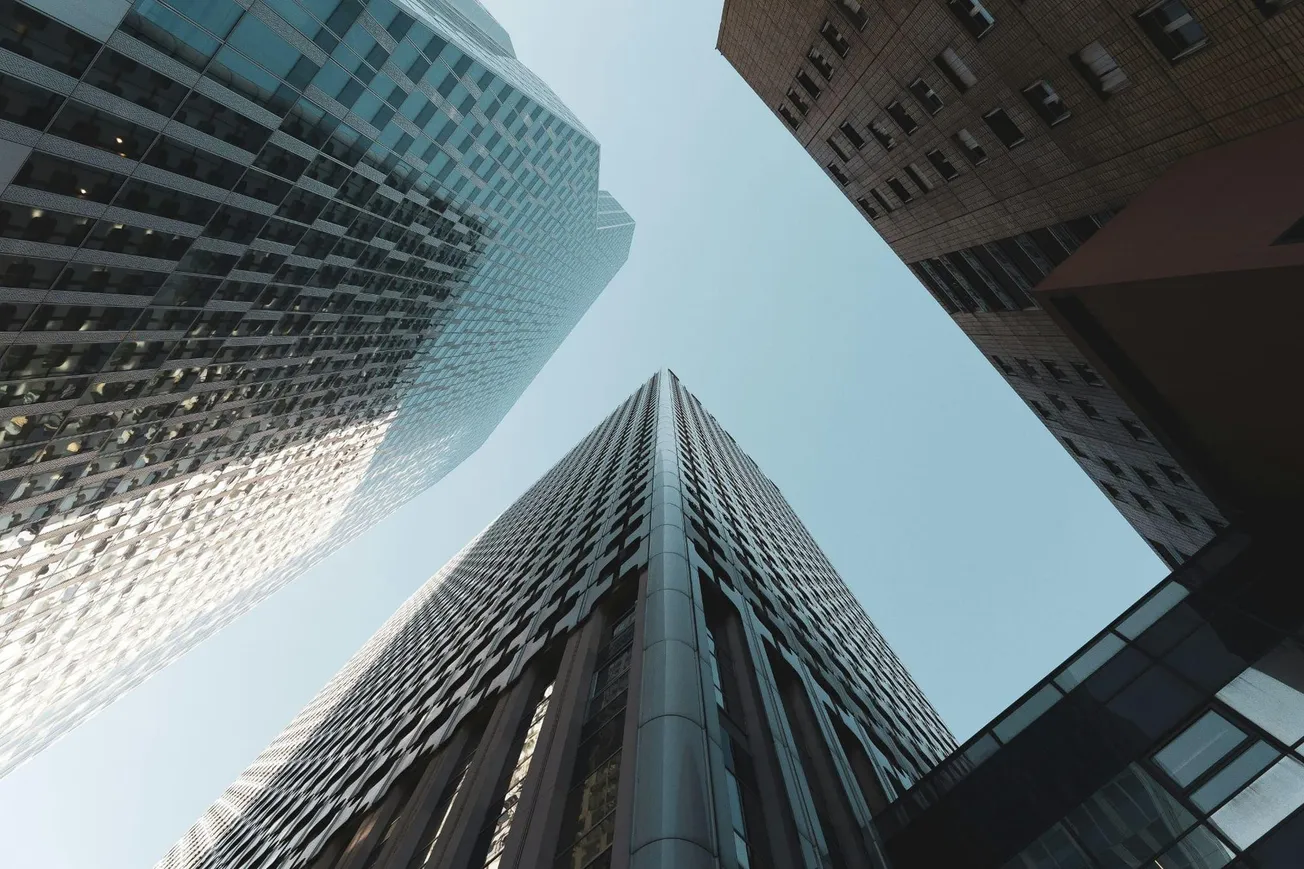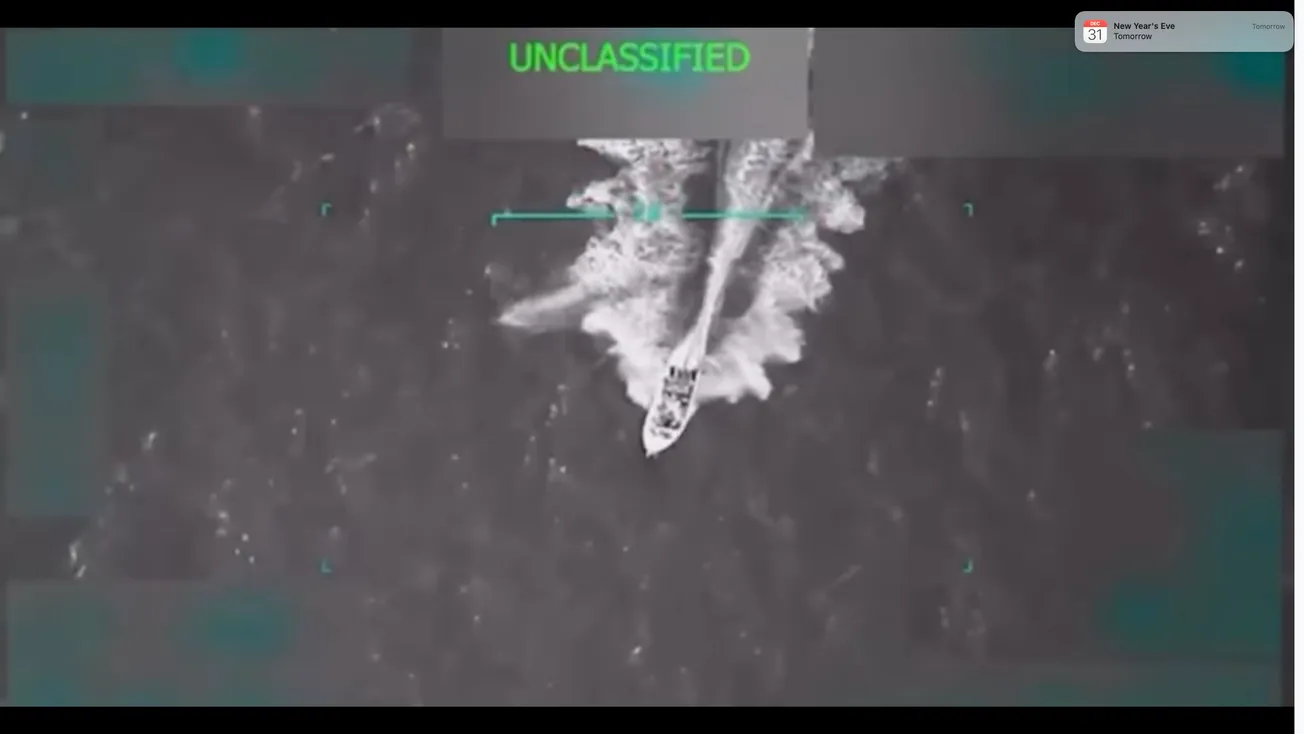This past March 26, at 1:29 a.m., the Francis Scott Key Bridge in Baltimore, Maryland, a critical link in highway transportation on Interstate 95 along the U.S. East Coast, and also a critical avenue of trucking to the Baltimore port, collapsed into the Patapsco River. The Singapore-chartered cargo ship Dali, 985 feet long and weighing 115,000 tons, had its engine fail, only a few miles out of port—which is completely unexplained. The Dali lost its steering power and rammed into one of the two main pylons of the bridge, bringing it down in seconds (Figure 1). Six construction workers working on the bridge, who, USA Today reported, came from Guatemala, Honduras, El Salvador, and Mexico, were killed.
Over the past 50 years, the U.S. has experienced bridge tragedies time and again. In a previous major case on Aug. 6, 2007, the Interstate 35W bridge over the Mississippi River near downtown Minneapolis was loaded with rush-hour traffic creeping through a construction project when, without warning, the bridge collapsed, taking with it 111 vehicles; 13 people died and 145 were injured.
In the United States, bridge infrastructure, and that of railroads, electricity grids, power stations, and water management systems, are in a phase of collapse. This long-term decay was set into motion when President Richard Nixon decoupled the dollar from the gold reserve system on August 15, 1971; it gained force with U.S. Federal Reserve Board chairman Paul Volcker’s policy, beginning 1979, of “controlled disintegration of the economy,” forcing up the U.S. prime interest rate to 21.5% by February 1980. The speculative bubbles that have dominated economic decision-making since then, have siphoned off funds for economic infrastructure above all. New infrastructure—high speed rail, fission and fusion power—has been suppressed; regular maintenance abandoned for existing infrastructure; rational regulation standards rejected; and redundancy—whereby indispensable back-up systems are built into infrastructure in order to prevent disasters—ignored. It is overall policy, not a single incident, that causes disaster.
The Francis Scott Key Bridge collapse was eminently preventable. In many facets of this story, the addition of pieces of infrastructure, or even the utilization of existing infrastructure, would have eliminated the disaster. This article investigates several crucial “singularities” in the manifold of the causes of the catastrophe. Conceptualizing the key features of the series of singularities permits a higher idea of what actually happened, and the protective steps that should now be taken.
M/S Dali Engine Failure: More Profound Questions
Let us start with the vessel. The M/S Dali was built by Hyundai Heavy Industries of South Korea in 2014, and commissioned in 2015. The container vessel is owned by Singapore-based Grace Ocean Pte Ltd, and sails under a Singapore flag (more on this below).
The Dali is a big ship (300 meters long), weighing, without cargo, 95,000 tons, according to the April 11 Spectrum News. At maximum, it can carry 10,000 standard TEU metal shipping containers (twenty-foot-long equivalent units), although at the time of the accident, it was carrying about 4,700. (The world’s largest container ships can carry more than 24,000 TEU containers.) Physically, the Dali is propelled by a single low-speed, two-stroke crosshead diesel engine, capable of 55,000 horsepower, which powers the ship’s single large propeller.
The Dali left port at about 12:30 a.m. March 26, headed toward the Key Bridge. It should be noted that the Baltimore port consists of more than 10 terminals, most of them in parts of the harbor now completely blocked by the collapsed bridge. The Dali was escorted—and perhaps towed—by tugboats for safety purposes. As it approached the bridge, the Dali’s engine failed. Even though the ship has a range of automation and computerized monitoring, without its engine operating it is very difficult to steer. The captain appeared to switch on the ship’s four back-up generators; the vessel’s lights flashed back on and off again. But the generators by themselves could not—and according to one report, cannot—restart the engine.
There was a cascading collapse of the vessel’s most crucial operating systems that left it adrift. The March 30 New York Times, in an article, “Baltimore Investigation Turns to Ship’s Deadly Mechanical Failure,” reported:
Maritime engineers say an electrical chain reaction could also have caused the generators to go down. When one generator fails, it can create a situation in which there is too much demand for too little supply of electricity. Other generators are then at risk of being damaged, so the system will shut them down, too, said Richard Burke, a professor of marine engineering at SUNY Maritime College in New York. “It’s as if you and I are both holding up a heavy weight and I let go,” Burke said. “You can’t hold it by yourself, so you drop the weight.”
With the engine not working and the generators off, the rudder, which depends on electricity, stopped working. The Dali was literally drifting; the outgoing tide pulled it along. It sounded its emergency horn, and then crashed into the bridge.
On April 11 Jennifer Homendy, chair of the National Transportation Safety Board (NTSB), whose remit is to investigate transportation accidents, told a U.S. Senate Committee that in its investigation, the NTSB is focusing on the Dali’s power system, and that it has asked builder Hyundai Heavy Industries of South Korea for assistance in examining the ship’s circuit breakers. Homendy said,
We have had the manufacturer of the equipment in the engine room to look closely at the electrical power system. We’re continuing to look at that.
This leads to two points. First, the breakdown of the Dali’s electrical and engine system was so significant, how it could have passed any basic inspection while undergoing maintenance in the Port of Baltimore? Inspections have to be performed on a regular schedule. Coast Guard Rear Admiral Shannon Gilreath told CNN March 28,
We were informed that they were going to conduct routine engine maintenance on [the Dali] while it was in port. That’s the only thing we were informed about the vessel in that regard.
An airplane must undergo a comprehensive checklist of its auxiliary fuel pump, altimeter, directional gyro, and so on, each time it is allowed to leave the ground. The Dali was scheduled to make a 14,300 km trip from Baltimore to Sri Lanka; how could it have been cleared to leave port when its electrical grid and engine functioning were such that they broke down in less than nine miles?
The second point: Large cargo ships can—and should—have multiple engines arranged in a configuration known as a “twin-screw” or “multi-engine” set-up. These ships have two or more engines—some have four—each driving a separate propeller or a propulsion unit, providing redundancy. The Dali only had one engine. Had it had two engines: If both were in use, and one failed, then the engine still functioning would have propelled the ship by itself; if only one engine was in use, and failed, the commander would have activated the other one.
The likely reason that the Dali had only one engine, is cost-cutting. One source calculated that each engine takes up the space of about 150 containers: Having only one engine leaves more space for cargo containers on which money could be made. And a ship’s engine can cost millions of dollars.
This gets to the fundamental issue of essential redundancy. Infrastructure must have built-in redundancy, whether it be a water management system, electricity grid, a transport vehicle, etc. But many infrastructure operators, ship owners, etc. reject “too costly” redundancy.
Regulation and law should require vessels to have two engines. Had the Dali had a second engine, the chance is very great that there would not have been a ruinous accident.
The Central Function of Tugboats
Tugboats can either tow a large vessel, or run alongside it, usually in teams, to push or direct it in a desired direction. A towing tugboat usually has a high-strength steel cable attached to its stern, which runs to the bridge of the vessel it is towing.







